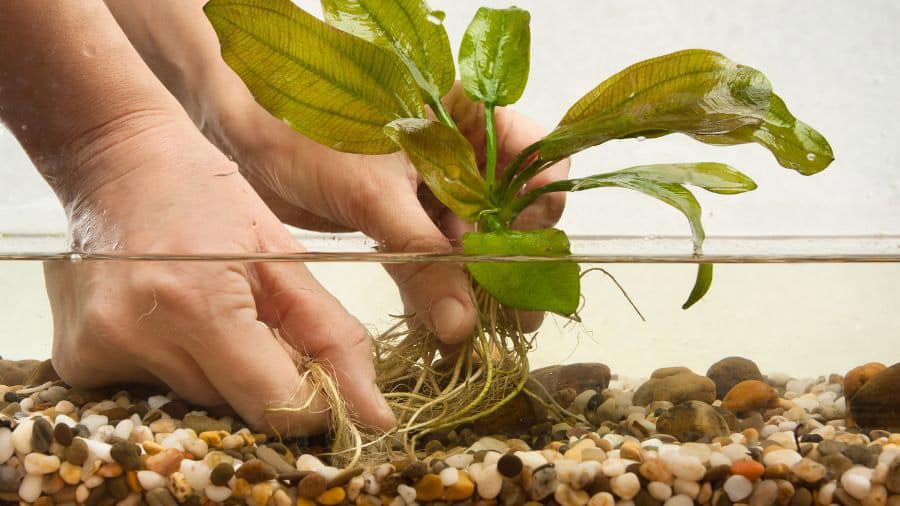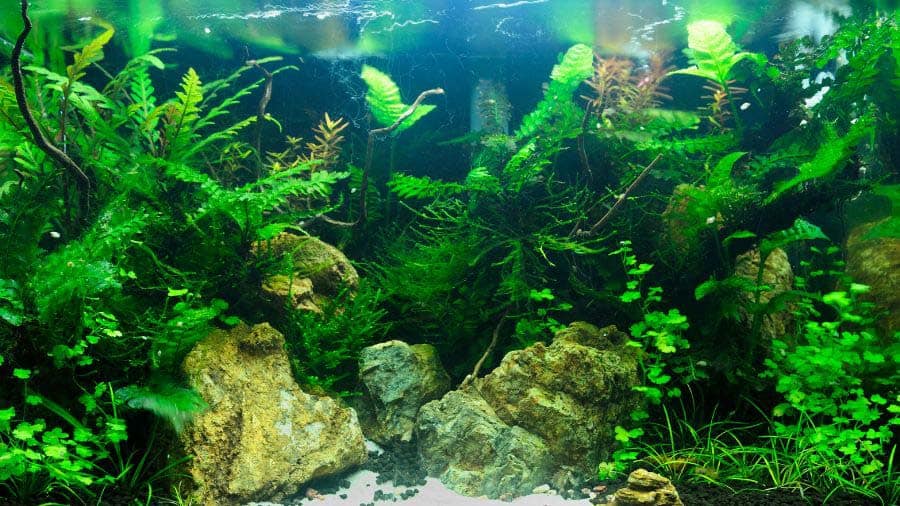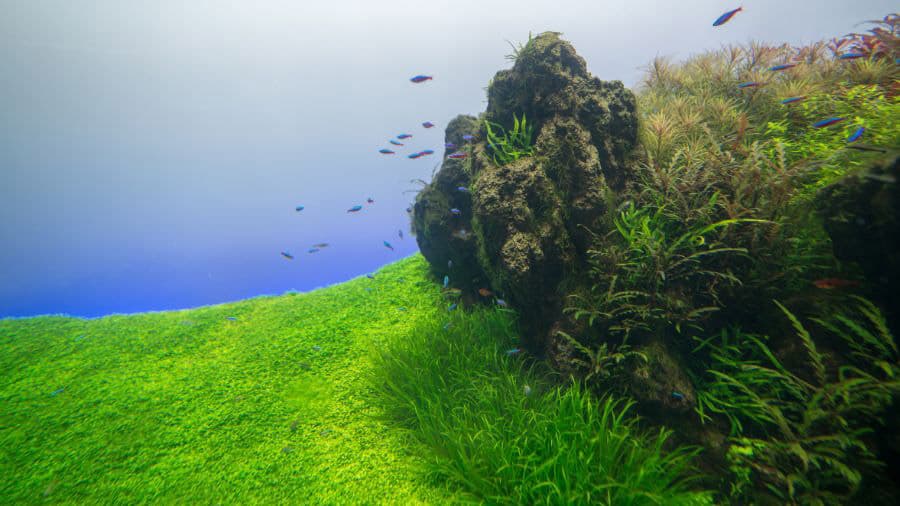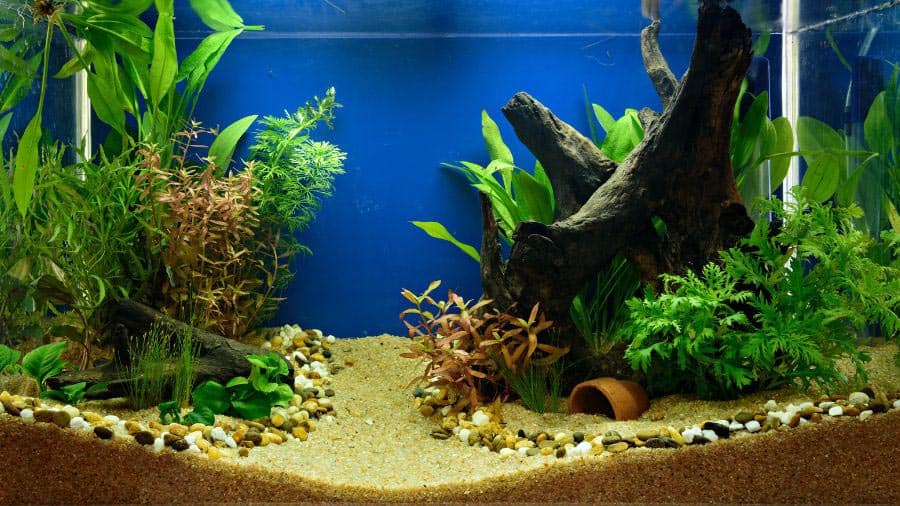Beginner Friendly Styles Of Aquascaping
Choosing a style of aquascaping will be the first step to get you started in this journey. If you own an aquarium, want to start, or have always wanted to try aquascaping but never knew where to start, I will guide you through all the styles to help you get started with your blueprint.
I have always been fascinated with how beautiful some aquascaped-styled fish tanks look and have always wanted to try one of my own, like a scene from how you would expect it to look in nature yet so aesthetically pleasing, handcrafted art that can keep you captivated for hours.
Your first time planning and setting out the hardscapes and plants of your aquarium might be very scary, but practice makes perfect. If you feel like you need to practice placement before you get started, you can.

What Is Aquascaping?
The best way to describe aquascaping to someone is to describe it as underwater garden art. Aquascapers or “aquatic gardeners” use natural materials like rocks, driftwood, live plants, and fish to create their aquatic art.
The fun thing about aquascaping is you don’t have to stay within one style. You can combine styles and borrow elements from one another. The possibilities are endless, and your creativity can run free. The styles only provide a guideline. Feel free to crossover as you please.
A great tip regarding algae control I would like to share is that you must plant densely when you first plant in your new tank. This discourages the algae to grow due to the lack of large open spaces. We always think to plant a bit here and there and that they will grow fast enough, but unfortunately, this isn’t always the case.

Jungle Style Aquascaping
As the name suggests, the Jungle style focuses little on placement, and plants can go wild. The best way to describe this style would be “organized chaos” where it doesn’t appear messy.
Some people like to group slower-growing plants away from the faster-growing types to avoid the slower plants being “left in the dark”. Due to the challenge of balancing out the light levels, this is one way to prevent overshadowing from occurring when choosing this style.
You can create barriers within the plant grouping by using rocks or driftwood to add to the jungle look. The added benefit of using driftwood is that driftwood releases tannins into the tank’s water over time. This helps the overall PH levels of the tank, plus the driftwood provides another surface for some plants to grow on, such as Riccia Fluitans, that gives a beautiful moss-like appearance over the wood.
To return to tannins, have you ever seen freshwater rivers or ponds with a yellow or brown-tinted appearance? Well, that is precisely what that is. The tannins cause the water’s discolored appearance, softening the water and lowering the PH levels, which benefits the fish in aquariums and outdoor ponds—an excellent choice to add a piece of driftwood into your aquarium.
The larger, faster-growing plants are usually like Amazon Swords, Criniums, and Vallisneria. The smaller, slower-growing plants are Anubias, Marimo Moss Balls, and Java Fern. Another jungle-looking thing you add to your aquarium is some floating plants like Water Lettuce, Duckweed, or Azolla, to name a few.
The maintenance of this style would be algae control and pruning to ensure all plants are at their happiest. Depending on your tank’s fish population, you might require additional plant nutrients.
Adding enough fish life to your aquarium for your space will ensure the plants get the nutrients they need to grow and establish themselves.

Amano Style Aquascaping
This aquascaping style is called “Nature” or “Natural”. This style is inspired by Japanese design philosophies from their gardening techniques and placement. The Japanese principle of Wabi Sabi plays a significant role in the aesthetics of this style. Wabi means “less is more” and Sabi translates to “attentive melancholy”.
This aesthetic principle refers to the asymmetry, imperfections, and recognition of the natural process of things. This style would showcase a rock canyon on one side of the tank featuring plants growing from the canyon walls, mimicking a wild scene. This style has a minimalist approach when it comes to the decorations.
Creeping plants and small fish are key role-players in this style. Careful attention is also paid to the non-living elements for the total “zen” aesthetic with many open spaces within the tank. Aquatic mosses are trimmed and styled to resemble moss growing in areas.
The maintenance of this tank is pretty low once it is established. Pruning will only be required here and there as it becomes necessary.

Dutch Style Aquascaping
The Dutch style is quite the opposite of the Jungle, Amano, and Biotope. The three styles mentioned above are about keeping it natural, whereas the Dutch style can be described as more planned, organized, and tidy. This style is also the most popular, and outdoor gardeners will feel most at home with this style of aquascaping.
The overall look of this style depends heavily on the plants as the central focus with contrasting colors, textures, and sizes. Should you choose to incorporate these elements, the rocks, and driftwood are not this style’s primary focus.
This style also has a characteristic of the substrate mainly being (>70%) covered by creeping or carpeting plants. Dwarf Hairgrass is an excellent option for carpeting as it gives great texture, and the bright green adds to your aquarium. You can play with various carpeting textures to create more texture and contrast.
Fish like Discus, Cardinal Tetras, Corydoras, Congo Tetras, or Angelfish are perfect for this style. You can choose a fish type that suits your overall aquarium look. Using a fish like an Angelfish that swims gracefully through the plants adds to the calm, beautiful aesthetic.
This style’s maintenance (pruning) is higher than you would experience with another style. Regular testing of water and fertilization are keys to maintaining this style.

Iwagumi Style Aquascaping
This Japanese-inspired style focuses particular attention on rock placement and formation. Each rock has a name and a specific role within the aquarium.
Oyaishi is the name of the primary focal rock, which should be the biggest and prettiest rock out of the bunch. The secondary stone is called the Fukuishi and should look like the smaller sister stone of the main stone.
The third stone (Soeishi) is usually placed between the two others to ensure it shows off the size of the main stone. The fourth stone (Suteishi) is the smallest stone out of all the rocks, and it is used to scatter and complement the desired formation.
The idea with this style is to create an asymmetrical formation that doesn’t look perfect as in nature, you wouldn’t see a “perfect” rock formation. This style has a very minimal approach to plants, and most would feature one plant like Vallisneria or Dwarf Hairgrass as the ground cover.
Driftwood is sometimes incorporated into this style but would never overpower the main rock features. This style has low maintenance due to the lack of plants that require regular pruning.
Fish is not the main focus of this styled tank and would showcase only a small school of fish or shrimp. Small fish like Endler’s Livebearers, Tetras, Harlequin Rasboras, or Cherry Barbs work great with this style. Recommended shrimp that you can add to your tank would be Cherry or Bamboo shrimp. These shrimp are beautiful with their color varieties and are hardy little creatures.
Conclusion
Each style of aquascaping comes with its benefits and maintenance. You can choose to combine styles that suit your needs. Once you know what fish you want to showcase, you can easily select the right plants to complement the fish and make it your own.
I love the less is more approach as I am not a fan of constant maintenance, but I look forward to trying and combining some form of Dutch style with a low-maintenance style. I am very excited to start a new tank for my Fancy Goldfish. I will document that and let you know how it goes.
I have found that my Lionhead loves eating plants, so I will have to add harder types of plants to ensure he doesn’t eat all of my hard work. I am also thinking of incorporating faster-growing plants so the growth rate can hopefully keep up with the chomping rate. We will see a trial and error to come.
